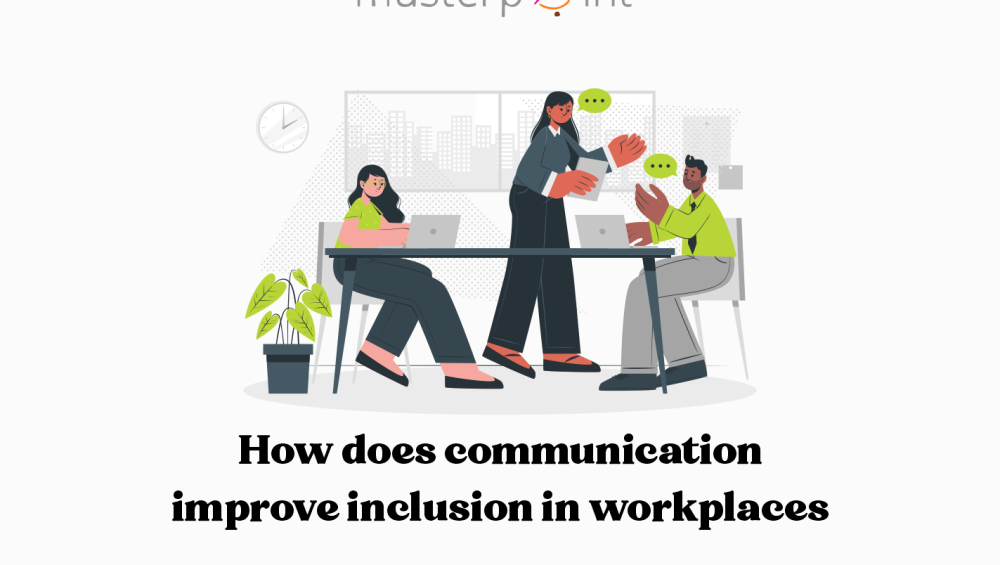In order to promote inclusiveness at work, communication is key. But first, we must define what “communication in a workplace” entails.
The exchange of information, ideas, and messages among people in a workplace or organizational setting is referred to as communication. It involves spoken, nonverbal, textual, and digital exchanges, among other modes of communication. The efficient operation of a workplace, the accomplishment of objectives within smaller units, and the entire organization’s success depend on effective communication.
The following are a few ways that communication might enhance inclusion:
Open and Transparent Communication: Establishing an atmosphere of open and transparent communication enables staff members to openly share their thoughts, worries, and viewpoints. It fosters a sense of inclusion and belonging when people feel free to express their ideas without worrying about criticism or retaliation.
Active Listening: Employees are shown respect and affirmation for their ideas and efforts by actively listening to their opinions and experiences. Give them your undivided attention, keep eye contact, and acknowledge their points of view as you practice attentive listening. This promotes inclusivity by guaranteeing that each person’s voice is heard and respected.
Empathy and Understanding: Communication that is effective requires empathy and comprehension. Spend time considering other people’s perspectives to comprehend their struggles, needs, and experiences. By bridging gaps and fostering an inclusive workplace where staff members feel heard, seen, and supported.
Diversity and Inclusion Training: Programs for communication training that emphasize diversity and inclusion can give staff members the knowledge and abilities to interact in a courteous and inclusive manner. These programs can increase team member understanding and collaboration by bringing up awareness of unconscious biases, cultural differences, and effective communication methods.
Clarifying Expectations: Clear communication about expectations, goals, and performance standards helps prevent misunderstandings and ensures that all staff members are aware of the expectations for themselves. This transparency encourages fairness and equal opportunity, which lowers the possibility of bias or exclusion.
Regular Feedback and Recognition: Fostering inclusion requires regular feedback and acknowledging employees’ contributions. Give people frank criticism that promotes professional development and helps them feel appreciated for their work. To foster an inclusive and encouraging work atmosphere, acknowledge and appreciate the many accomplishments and efforts of employees.
Inclusive Language: Pay attention to the language used at work and make sure it is courteous and inclusive. Avoid assuming things or using words that can marginalize or exclude particular groups. Be aware of cultural and language differences, use inclusive pronouns, and steer clear of stereotypes.
Collaboration and Teamwork: Promote teamwork and cooperative communication among staff. Encourage an atmosphere where different viewpoints are welcomed and sought after. This collaborative method fosters inclusivity by utilizing the team member’s individual talents and combined wisdom.
Employee Resource Groups (ERGs): Employee resource groups (ERGs) and affinity groups can give members of underrepresented groups a forum to connect, exchange stories, and offer suggestions for making the workplace more inclusive. Meaningful change and initiatives that meet the particular demands and difficulties these employees confront might result from effective communication among these groups.
Leadership Commitment: Workplaces that are inclusive require dedication and backing from the top. Leaders should actively encourage inclusive communication, provide a positive example for inclusive behavior, and open up avenues for candid discussion. The tone of the entire organization is set when leaders prioritize and stress the value of inclusiveness.
Organizations may foster a more diverse workplace culture where employees feel valued, heard, and empowered to produce their best work by putting these communication principles into practice.

